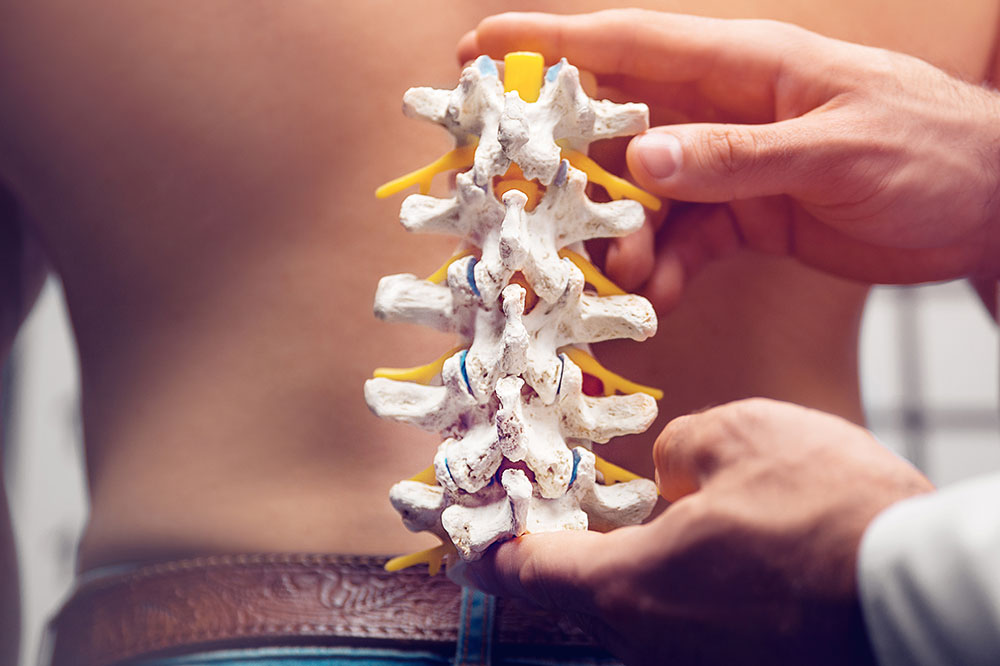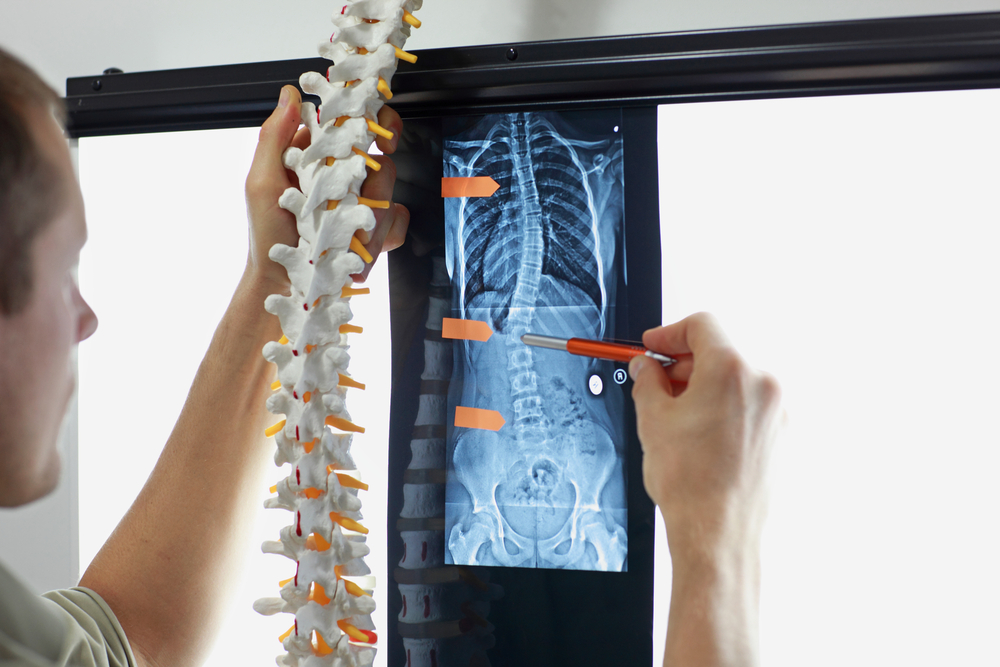Comprehensive Guide to Vertebral Compression Fractures: Symptoms, Causes, and Advanced Treatment Options
This comprehensive guide explores vertebral compression fractures, detailing symptoms, causes, diagnostic methods, and advanced treatment options. Emphasizing early detection and lifestyle modifications, it aims to inform readers about effective management strategies to improve recovery outcomes and prevent future fractures. Suitable for patients and caregivers, this article highlights the importance of proactive bone health maintenance and modern surgical innovations for enhanced quality of life.

Comprehensive Guide to Vertebral Compression Fractures: Symptoms, Causes, and Advanced Treatment Options
Vertebral compression fractures are a common but often overlooked health issue that primarily affects the spinal bones. When a vertebral bone in the spine collapses under pressure, it results in a wedge-shaped deformity where the vertebra shrinks and loses its normal height. This condition can lead to significant discomfort and mobility issues. Multiple vertebral fractures can cause a pronounced spinal deformity known as kyphosis, which is characterized by an exaggerated forward curvature of the thoracic spine, leading to a noticeable reduction in overall height and postural imbalance. Most vertebral fractures tend to occur in the thoracic and lumbar regions, that is, the middle to lower back, which are critical for supporting body weight and facilitating movement. The consequences of these fractures go beyond pain; they can influence posture, breathing, and overall quality of life.
Recognizing the Symptoms of Vertebral Compression Fractures
Recognizing the signs and symptoms of vertebral compression fractures is essential for early diagnosis and treatment. The most common presentation includes sudden, severe back pain localized at the site of the fracture. This pain can be persistent and worsen with movement, coughing, or standing for extended periods. Some patients might experience stiffness and restricted mobility. In certain cases, individuals report a feeling of numbness, weakness, or tingling in the limbs if nerve compression occurs. Over time, untreated fractures can lead to a gradual loss of height, hunching of the back, and chronic discomfort, significantly impairing daily activities. It's also crucial to note that some fractures may initially be asymptomatic and only discovered incidentally through imaging conducted for other reasons.Primary Causes and Risk Factors for Vertebral Compression Fractures
The primary culprits behind vertebral compression fractures are conditions that weaken bones, notably osteoporosis, which leads to reduced bone density and increased fragility. Osteoporosis affects millions worldwide, especially postmenopausal women, individuals over 50, and people with certain medical conditions. Fragile bones are vulnerable to even minor stresses, such as lifting heavy objects or falls from a standing height. Beyond osteoporosis, other factors that contribute to fracture risk include certain cancers like lymphoma and multiple myeloma, which can weaken bone structure. Racial and genetic factors also play a role; studies indicate that Asian and Caucasian women are at heightened risk, partly due to the prevalence of osteoporosis in these populations. Lifestyle choices such as smoking, excessive alcohol consumption, and a sedentary lifestyle further increase susceptibility. Additionally, long-term use of medications like corticosteroids can compromise bone health, making fractures more likely.Diagnostic Procedures for Identifying Vertebral Fractures
Accurate diagnosis relies on a combination of detailed medical history, physical examination, and imaging studies. Physicians typically start by assessing symptoms, risk factors, and conducting a physical exam to evaluate spinal alignment and tenderness. Confirmatory tests include X-rays, which reveal vertebral deformities and fracture lines. MRI scans provide detailed images of soft tissue, nerves, and the precise location of the fracture, especially useful if neurological symptoms are present. Computed tomography (CT) scans offer cross-sectional views of the vertebrae, aiding in assessing the degree of collapse and planning treatment. Bone scans, though less common, can detect multiple fractures and assess overall bone health. These diagnostic tools help differentiate between compression fractures caused by trauma versus degenerative conditions and guide the selection of appropriate treatment strategies.Modern Treatment Options for Vertebral Compression Fractures
Treatment approaches vary based on the severity of the fracture, patient age, overall health, and presence of neurological symptoms. Non-surgical management is often effective for stable fractures and includes pain control with analgesics, anti-inflammatory medications, and rest. Bracing, such as thoracolumbosacral orthoses, can help stabilize the spine and provide pain relief. Nutritional support with calcium and vitamin D supplements helps promote bone healing and prevent future fractures. Physical therapy is integral to rehabilitation, focusing on gentle exercises to improve posture, strengthen back muscles, and restore mobility. In cases where fractures are unstable or cause persistent pain, surgical options like kyphoplasty and vertebroplasty are considered advanced minimally invasive procedures. These procedures involve inserting a balloon or cement into the fractured vertebra to restore height and stabilize the bone, providing rapid pain relief and improving functional outcomes. Recent developments in surgical techniques aim to reduce complications and enhance recovery times.Home Care and Lifestyle Modifications Post-Fracture
Effective home care plays a vital role in recovery and prevention of further fractures. Applying ice packs to the affected area during the initial phase of injury helps reduce swelling and control pain. Rest is important initially, but prolonged bed rest can weaken muscles, so gradual activity progression is encouraged as tolerated. Maintaining a balanced diet rich in calcium and vitamin D enhances bone strength, making bones more resilient against future injuries. Weight-bearing exercises, under medical guidance, help stimulate bone regeneration. Lifestyle modifications include quitting smoking, limiting alcohol intake, and engaging in regular weight-bearing and muscle-strengthening activities. Fall prevention strategies, such as installing handrails, removing tripping hazards, and ensuring proper lighting at home, significantly reduce the risk of future injuries. Regular follow-up with healthcare providers is crucial to monitor bone health and adjust treatment plans accordingly. The healing process usually spans three to six months, but full recovery timelines differ based on age and overall health.Conclusion
Vertebral compression fractures are a significant health concern, especially among the elderly and those with weakened bones. Early recognition of symptoms, prompt diagnosis through advanced imaging techniques, and a combination of conservative and surgical treatments can effectively manage the condition and improve outcomes. Preventative measures, including bone-strengthening lifestyle habits and fall prevention, are essential to reduce the incidence of these fractures. With ongoing medical advancements, more effective minimally invasive procedures and supportive therapies are enhancing patient recovery and quality of life. If you suspect a vertebral fracture, consulting a healthcare professional promptly is critical to avoid complications and maintain spinal health.




